PDF chapter test TRY NOW
In the previous topic, we learnt about meristematic tissues. But plants cannot do their functions with only meristematic tissues.
- Plants have to store food and water
- Plants have to get mechanical support
To perform such kind of specific functions, plants require permanent tissues.
Permanent tissue:
A permanent tissue is made up of mature, living or dead cells divided from meristematic tissues. Permanent tissues are those in which growth has stopped either completely or for the time being. At times, they become meristematic partially or wholly.
Process of differentiation:
\(\text{Meristematic tissues}\) \(\xrightarrow{\small{\text{Differentiation process}}}\) \(\text{Permanent tissues}\)
In plants, meristematic tissue loses its ability to divide after they take up a specific role. This process of conversion into a permanent shape, size, and function of a meristematic tissue into a permanent tissue is called differentiation.
Differentiation process causes the development of various types of permanent tissues. There are two types of permanent tissue.
- Simple permanent tissue
- Complex permanent tissue
Simple Permanent Tissue:
Simple permanent tissue consists of structurally similar cells performing similar functions and occur in homogenous groups. They are not such specialised cells with thin cell walls made up of cellulose. Cells are loosely spaced in this tissue. So intercellular spaces between these cells are large.
Location: Simple permanent tissue generally found in few layers below the epidermis.
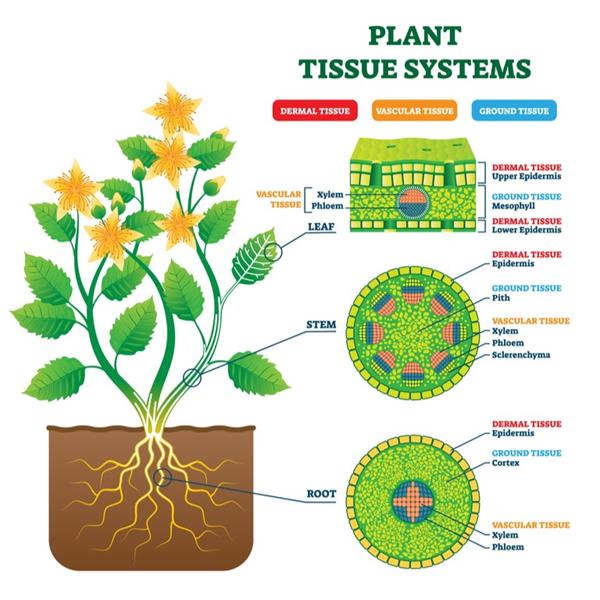
Anatomical diagram with leaf, stem and root microscopic graphic. Plant inner vascular, dermal and ground cross section
Major types of Simple permanent tissue are Parenchyma, Collenchyma and Sclerenchyma.
Parenchyma:
- Parenchyma word derived from Greek (Para "beside", enchyma means "in-filling").
- The term parenchyma was coined by Grew.
- It is the simplest, unspecialised, most primitive, most abundant permanent tissue that evolved first; therefore, it is treated as a fundamental tissue.
- The shape of the parenchyma cells ultimately depends on their function.
- They are spherical, oval, rounded or polygonal in shape. Irregular in spongy parenchyma. Cylindrical and elongated in palisade parenchyma. Parenchyma cells are elongated and armed in form in aerenchyma cells.
- These cells are loosely arranged with intercellular spaces.
- The cell wall is thin, which is made up of cellulose.
- It is a living cell with active protoplasts.
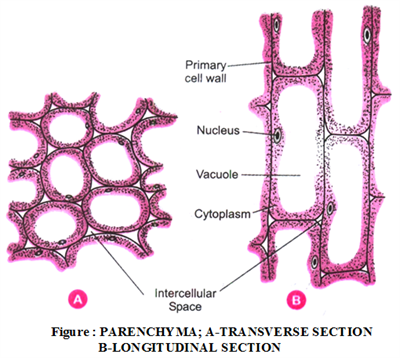
T.S. & L.S. of Parenchymal cell
Chlorenchyma:
In some cases, parenchyma tissue, when exposed to light, may develop chloroplasts that contain chlorophyll and involves in the process of photosynthesis. This type of parenchyma tissue is called chlorenchyma.
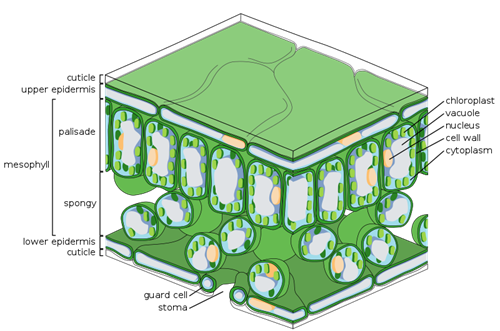
Leaf tissue structure
Aerenchyma:
In aquatic plants, parenchyma tissues have intercellular air spaces, which facilitates floating inside the water. This floating is because of the buoyancy provided by the parenchyma cells. This type of parenchyma tissue is called aerenchyma.
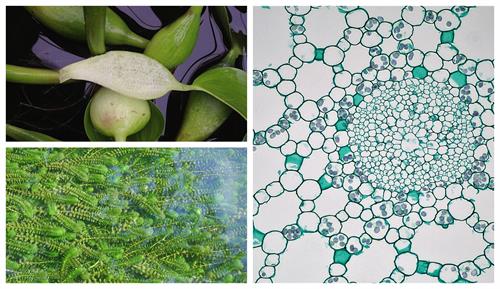
Aquatic plants of water hyacinth and Elodea, Monocot stem cortex in Elodea
Functions of Parenchyma:
- Parenchyma tissue generally stores water in many succulent and xerophytic plants.
- It also serves functions in the storage of food and nutrients.
- Parenchyma tissue also provides mechanical support and helps in absorption, buoyancy, secretion to the plants.
Note:
Succulent plants: Any plant with thick fleshy tissues adapted to water storage is called succulent. They store water only in the stem and have no leaves or tiny leaves (e.g., cactus). In contrast, others (e.g., agaves and aloe vera) store water mainly in the leaves.
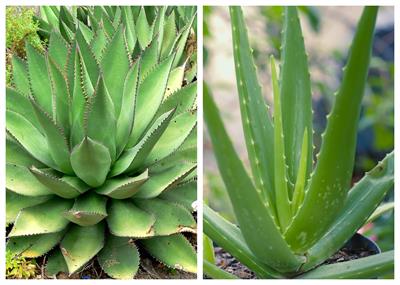
Left to right: Agaves and aloe vera
Xerophyte plants: A xerophyte (xero means "dry", phyte means "plant") is a plant that can survive in an environment with little availability of water or moisture. For some plants living in dry habitats, storage of water is significant and critical. So epidermis layer is thick in those plants to avoid the loss of water.
E.g. Cactus and pineapple
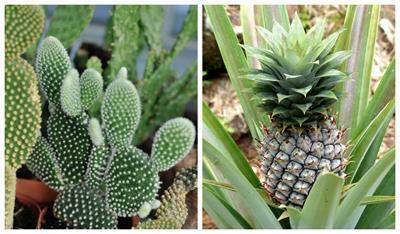
Left to right: Cactus and pineapple
Do you know?
- In potato, parenchyma vacuoles are filled with starch.
Isolation of starch from potato
- In apple, parenchyma stores sugar.
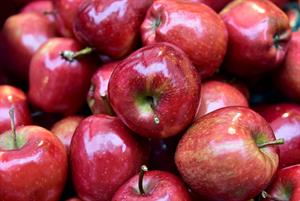
Apple
Reference:
https://upload.wikimedia.org/wikipedia/commons/3/33/Agave_shawii_1.jpg
https://www.freepik.com/premium-photo/potato-isolated-white-background-close-up_11548805.htm
https://upload.wikimedia.org/wikipedia/commons/e/e7/Aquatic_Monocot_Stem_Cortex_in_Elodea_%2836915455834%29.jpg
https://pixabay.com/photos/aloe-vera-succulent-healthy-plant-4733276/
https://pixabay.com/photos/cactus-plant-cacti-green-botanical-4773433/
https://pixabay.com/photos/pineapple-plant-fruit-fruit-nature-5079791/
https://commons.wikimedia.org/wiki/File:Elodea_canadensis_kz03.jpg
https://www.flickr.com/photos/144872528@N06/29379783355
https://commons.wikimedia.org/wiki/File:Leaf_Tissue_Structure.svg
